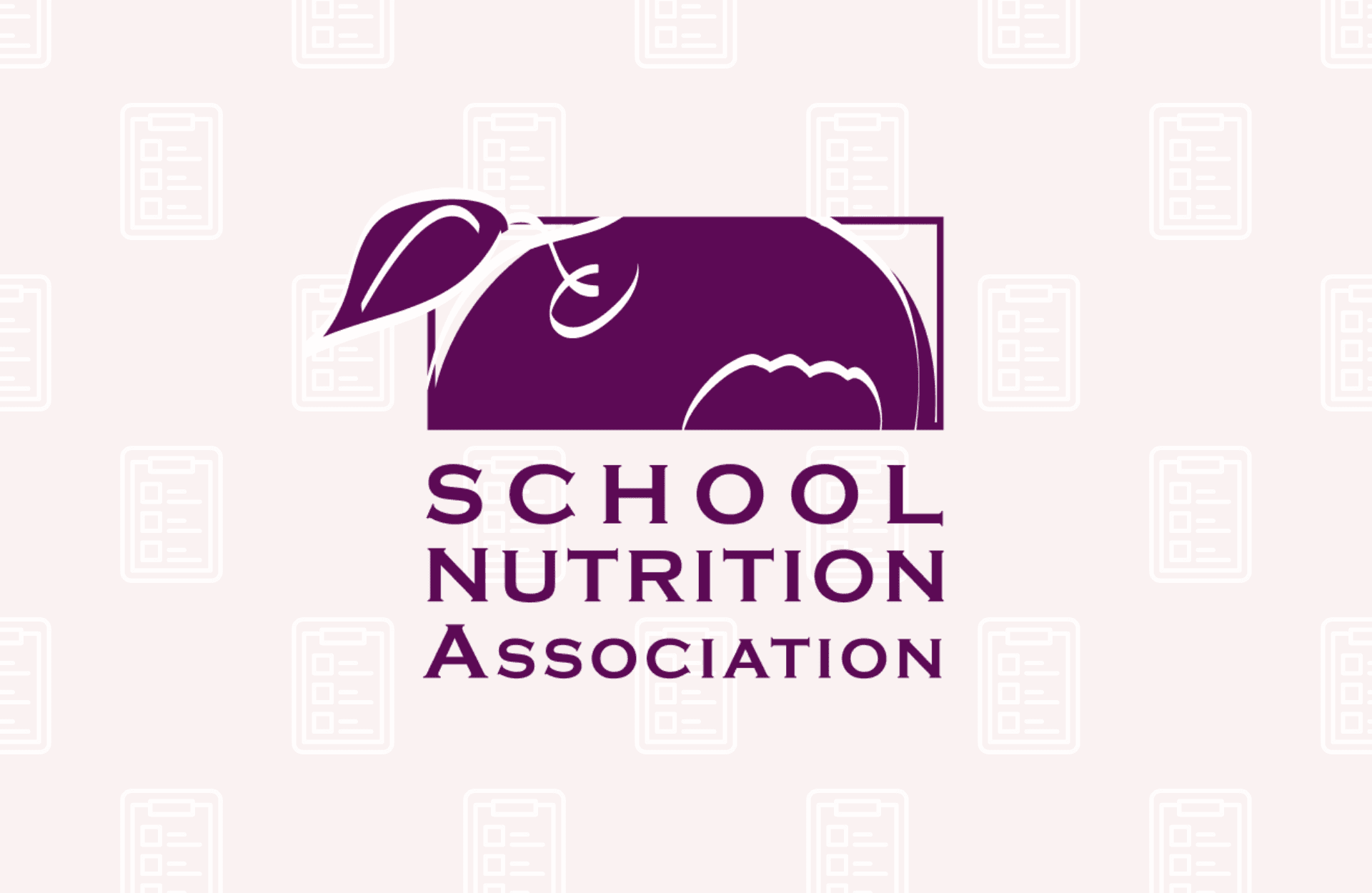FOR IMMEDIATE RELEASE:
Contact: Diane Pratt-Heavner
301-686-3124
media@schoolnutrition.org
New SNA Survey Finds More Choices & Bold Flavors on School Menus
2017-10-04
NATIONAL HARBOR, MD – A new survey from the non-profit School Nutrition Association (SNA) reveals school meal programs have enhanced menus with more international flavors, made-to-order entrees and cleaner label options. SNA’s 2017 School Nutrition Trends Report, released in advance of National School Lunch Week (Oct. 9 – 13), highlights a variety of ways school nutrition professionals are promoting healthier choices and working to mirror restaurant trends to boost school meal participation.
INNOVATIVE MENU TRENDS:
Nearly 60% of responding districts are offering new menu items this school year that feature international flavors, with an additional 26% considering or testing these dishes. Asian, Latin American, Middle Eastern and other ethnic recipes help schools appeal to diverse student communities and meet the increasing demand for bold flavors. Many of these recipes incorporate vegetables and legumes, helping schools meet updated nutrition standards for school meals while increasing consumption of healthy choices. Click on the links for examples from:Greenville County Schools, SC; Oxford Community Schools, MI, Southside ISD, TX
Cafeterias are keeping up with emerging clean label trends as parents increasingly request school menu items with fewer artificial flavors, colors or preservatives. More than half (56%) of surveyed districts report serving cleaner label choices and of those, 81% are also seeking additional cleaner label menu options. Click on the links for examples from:Solana Beach School District, CA and Jefferson County Public Schools, KY
Allowing students to customize their meal choice is a trend in 87% of responding districts, efforts include:
- 69% offer salad/produce bars or made-to-order salads
- Over half provide made-to-order or self-serve entrée bars, a particularly prevalent offering for high school students who expect a range of choices that mirror restaurant experiences
- 46% of responding districts provide flavor stations. These self-service bars allow students to add low or no-sodium seasonings, spices or sauces to boost flavor while helping schools meet sodium reduction targets.
- Click on the links for examples from: Rochester, NY; Garland ISD, TX; School District 27J, CO
“From Asian fusion entrees to build-your-own street taco bars, creative recipes and service strategies are getting students excited about eating delicious school lunches that meet nutrition standards,” said SNA President Lynn Harvey, Ed.D., RDN, LDN, FAND, SNS. “Despite tight budgets and persistent challenges, school nutrition professionals are making efforts to incorporate more clean label foods and expand menus to encourage children to make healthier choices.”
SODIUM:
Schools report employing a wide range of tactics to meet sodium limits for school meals. Notably:
- 73% of responding districts have reformulated recipes
- Increased scratch preparation of foods was cited by 61%
- 57% have limited the service of condiments
- One-third have reduced portion sizes
Despite these efforts, schools nationwide express concerns about sodium limits:
- 92% of responding school districts are concerned about the availability of foods that will meet future sodium limits and are well accepted by students; 58% of respondents report they are “very concerned.”
- 88% face challenges with student acceptance or familiarity of reduced sodium foods. A large majority of respondents also cite challenges with naturally occurring sodium in foods such as milk, low-fat cheese and meat; product or ingredient availability; and sodium levels in condiments.
WHOLE GRAINS:
School nutrition professionals are also working to increase student acceptance of whole grain foods required in school meals. Among responding districts:
- White wheat flour is utilized by 80% to give whole grain foods a lighter appearance
- 70% have conducted student taste tests to promote whole grain options and gather student feedback
- 39% helped students adjust by gradually increasing the amount of whole wheat flour in recipes
Despite these proactive steps, 65% of responding districts report challenges with the current mandate that all grains offered with school meals be whole grain rich; 22% of responding districts note a “significant challenge”
- Among districts reporting difficulties, 96% cite challenges with student acceptance and more than half (54%) note the higher cost of whole grains.
- When asked to identify which whole grain food is most troublesome, pasta or noodles was the top concern, named by nearly half of these districts.
- Nearly one-third of respondents have obtained a whole grain waiver, permitting the service of select foods that do not meet the standard. An additional 19% indicate they would like to acquire a waiver, but nearly 50% of these respondents feel there are barriers to applying for or receiving a waiver.
The Government Accountability Office (GAO) and USDA have also cited significant challenges under updated standards with student acceptance, participation, food waste and availability of foods that meet the rules. To address challenges, SNA has advocated for greater financial support for school meal programs and practical flexibility under whole grain and sodium mandates. This year, USDA Secretary Sonny Perdue and Congress have each taken steps to extend access to whole grain waivers and delay implementation of Target 2 sodium limits to help struggling schools.
The 2017 School Nutrition Trends Survey was conducted in August/September 2017 and netted 515 responses from SNA director-level respondents (usually the District Director), based in 515 unique school districts nationwide.
About School Nutrition Association:
The School Nutrition Association (SNA) is a national, non-profit professional organization representing 57,000 school nutrition professionals across the country. Founded in 1946, SNA and its members are dedicated to making healthy school meals and nutrition education available to all students. For more information on school meals, visit www.SchoolNutrition.org/SchoolMeals.
Related Articles

SNA Urges MAHA Commission to Invest in School Meals
Read More

School Nutrition Professionals to Implore Congress to Protect School Meals
Read More





